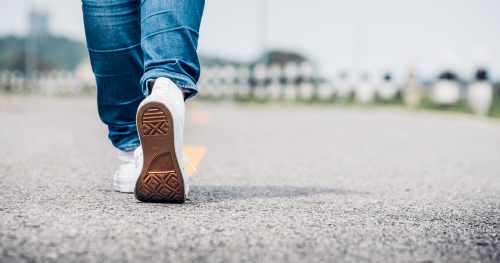
Walking is a primary mode of transportation for many individuals in and around the vibrant city of Miami. While sidewalks are designed to provide pedestrians with a safe and dedicated pathway, not all roads and areas have this essential infrastructure.
If you routinely travel by foot in Magic City, you can take proactive measures to stay safe and reduce the risk of being struck by an inattentive driver. If you suffer injuries from a vehicle, our Miami pedestrian injury lawyers at Aigen Injury Law can offer skilled legal assistance.
Always Walk Facing Oncoming Traffic
One of the most critical safety measures for pedestrians in areas without sidewalks is to walk facing oncoming traffic. This means that you should walk on the side of the road where vehicles are approaching you rather than having traffic come up from behind.
Walking facing oncoming traffic increases your ability to react to approaching vehicles that might collide with you. It also increases the likelihood that drivers will see you and take the necessary precautions to avoid striking you.
Stay as Close to the Edge of the Road as Possible
When walking on roads without sidewalks, stay as close to the edge of the road as possible. This way, you create more distance between yourself and oncoming vehicles, reducing the chance of a collision. If you need to walk on the side of a highway where it is legal to do so, stay on the left side in the direction you are traveling, facing oncoming traffic.
However, be cautious of obstacles like utility poles, debris, or parked cars that might force you to step further onto the road momentarily. Only step out and past these obstacles when you are sure there is no oncoming traffic.
Wear Bright and Reflective Clothing
In 2021, 74% of pedestrian deaths in the U.S. occurred during low-light situations. Visibility is critical when walking near traffic, especially in low-light conditions.
To improve your visibility to drivers, wear bright and reflective clothing. Fluorescent colors and reflective materials will make you stand out, making it easier for drivers to spot you from a distance, even at night or in areas without artificial lighting.
Carry a Flashlight or Use a Smartphone Light
Turn on a flashlight or use your smartphone’s flashlight feature when walking in dimly lit areas. This can increase your visibility when walking in the dark. A well-illuminated path will make it easier to see the path ahead and help drivers see you to avoid a collision.
Be Mindful of Your Surroundings
Staying focused and aware of your surroundings while walking reduces your risk of injury. Avoid distractions like texting, talking on the phone, or listening to loud music through headphones. Keep your full attention on the road and keep both your eyes and ears open for any approaching vehicles.
Walk Single File in Groups
Walking in a single file rather than side by side is advisable if you are walking with others. This reduces the space you occupy on the road, making it easier for vehicles to pass safely. It also minimizes the risk of being accidentally jostled into the path of oncoming traffic.
Use Alternative Routes
Choose routes with pedestrian-friendly infrastructure like sidewalks or designated walking paths whenever possible. Plan your walks in advance and consider alternative routes that prioritize safety. Avoid roads with heavy traffic or inadequate lighting.
For instance, consider the following options:
- Trails and Paths: Miami’s pedestrian-designed trails and pathways offer scenic waterfront walks, urban trails, and park pathways. The Miami Riverwalk and South Pointe Park Pier are pedestrian-friendly options.
- Neighborhood Sidewalks: Many neighborhoods in Miami have well-maintained sidewalks, particularly in residential areas. Some walkable areas include Coral Gables, Coconut Grove, and the Miami Design District.
- Pedestrian Bridges and Overpasses: Pedestrian bridges and overpasses in Miami provide safer crossing options in high-traffic areas, helping avoid busy streets.
Cross Roads Safely
Crossing roads without designated crosswalks or pedestrian signals can be particularly risky. To minimize the danger, follow these guidelines:
- Look both ways before crossing and wait for a safe gap in traffic.
- Make eye contact with drivers if possible to ensure they see you.
- Cross perpendicular to the road, never diagonally.
- Avoid running or darting across the road. Instead, walk briskly but cautiously.
Get Legal Help with Aigen Injury Law
Walking in busy areas without sidewalks can be challenging, but following these safety measures can reduce the risk of being struck by a car. However, if you suffer injuries due to a driver’s carelessness, our pedestrian accident attorneys can help you recover compensation for medical costs and lost wages.
Contact us today for a free consultation, and let us help you navigate the legal process and pursue the compensation you deserve.